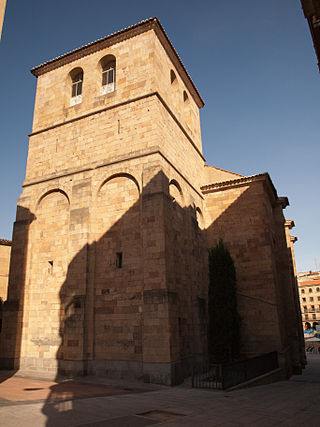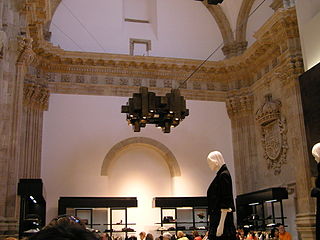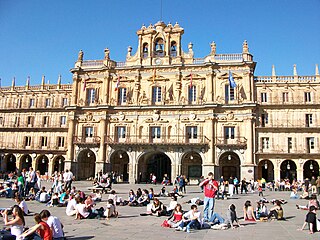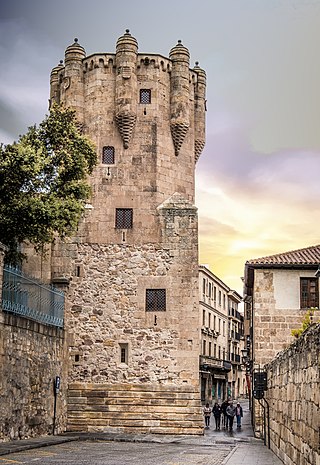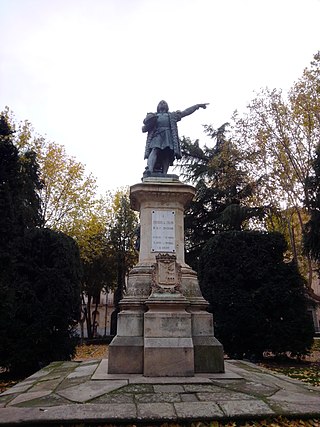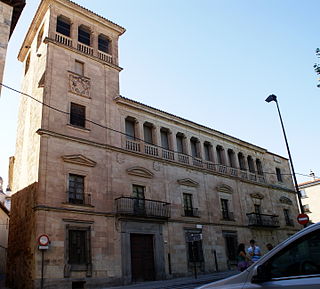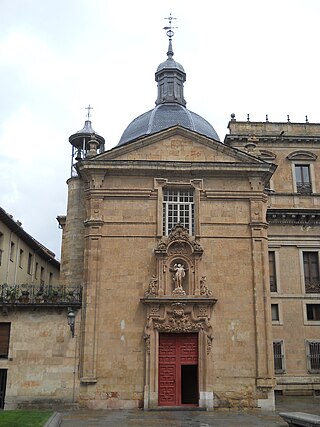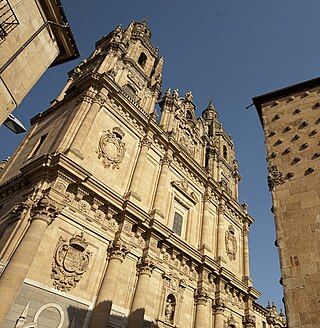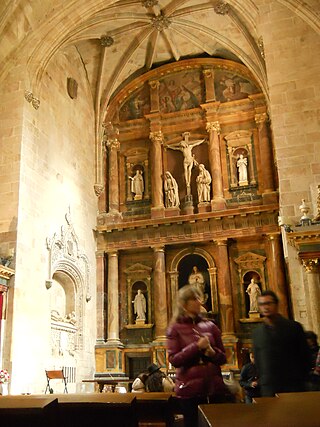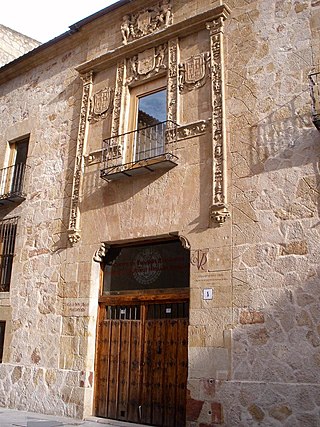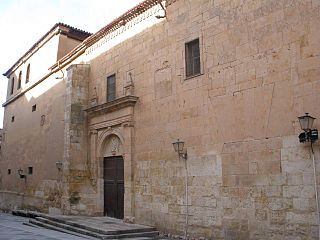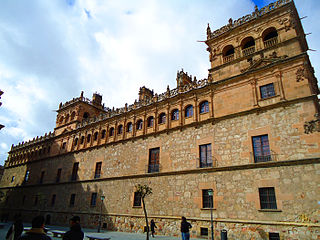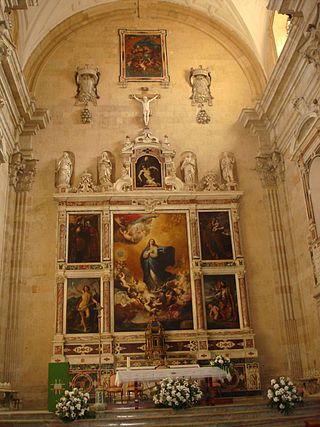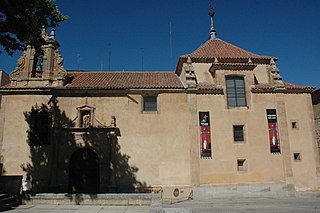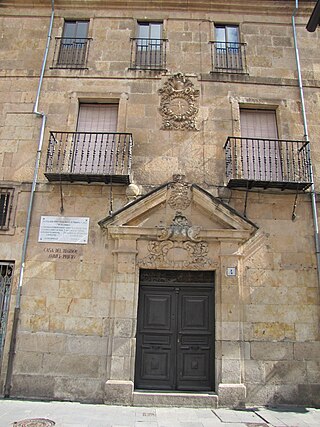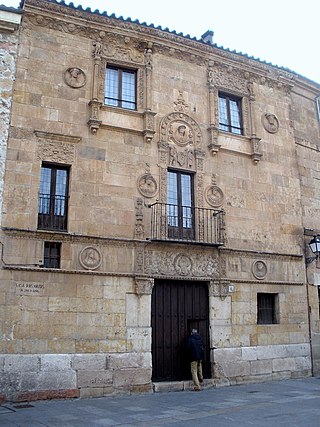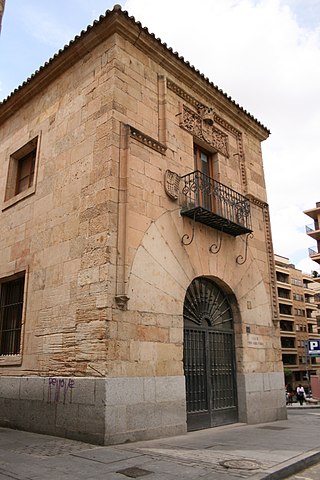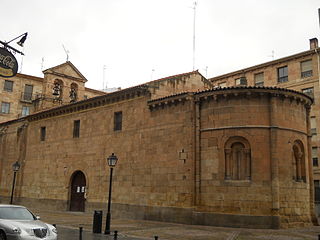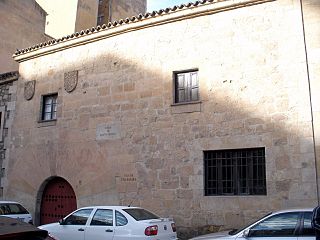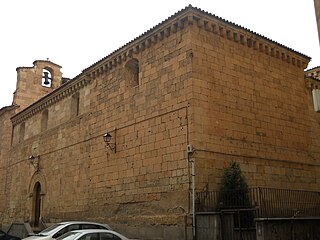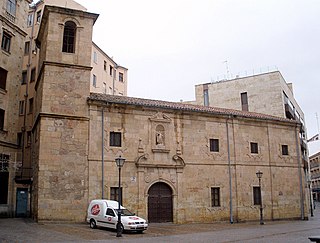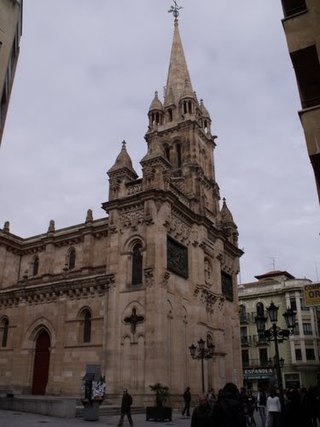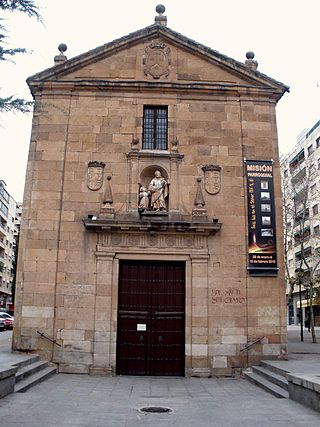Self-guided Sightseeing Tour #2 in Salamanca, Spain
Legend
Guided Free Walking Tours
Book free guided walking tours in Salamanca.
Guided Sightseeing Tours
Book guided sightseeing tours and activities in Salamanca.
Tour Facts
5.3 km
126 m
Experience Salamanca in Spain in a whole new way with our free self-guided sightseeing tour. This site not only offers you practical information and insider tips, but also a rich variety of activities and sights you shouldn't miss. Whether you love art and culture, want to explore historical sites or simply want to experience the vibrant atmosphere of a lively city - you'll find everything you need for your personal adventure here.
Activities in SalamancaIndividual Sights in SalamancaSight 1: Iglesia de San Julián y Santa Basilisa
The church of San Julián and Santa Basilisa is a church of Romanesque origin in Salamanca renovated in the seventeenth and eighteenth centuries, declared an Asset of Cultural Interest with the category of Monument by publication in the BOE of August 15, 1983.
Wikipedia: Iglesia de San Julián y Santa Basilisa (Salamanca) (ES)
Sight 2: Zara
The Convent of San Antonio el Real de los Franciscanos is located within the urban area of Salamanca (Spain).
Wikipedia: Restos del convento de San Antonio el Real (Salamanca) (ES), Website
Sight 3: Salamanca
Get Ticket*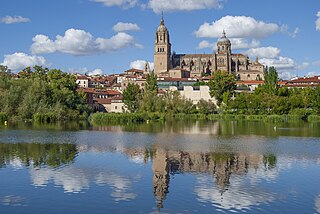
Salamanca is a municipality and city in Spain, capital of the province of the same name, located in the autonomous community of Castile and León. It is located in the Campo Charro comarca, in the Meseta Norte, in the northwestern quadrant of the Iberian Peninsula. It has a population of 144,436 registered inhabitants. Its stable functional area reaches 203,999 citizens, which makes it the second most populated in the autonomous community, after Valladolid. Salamanca is known for its large number of remarkable Plateresque-style buildings.
Sight 4: Plaza Mayor
Get Ticket*The Plaza Mayor is a large plaza located in the center of Salamanca, Spain used as a public square. It was built in the traditional Spanish baroque style and is a popular gathering area. It is lined by restaurants, ice cream parlors, tourist shops, jewelry stores and a pharmacy along its perimeter except in front of the city hall. It is considered the heart of Salamanca and is widely regarded as one of the most beautiful plazas in Spain. It is connected to the shopping area Calle del Toro from the northeast, Calle de Zamora from the north, the restaurants on Calle de Concejo from the northwest, Calle del Prior and the small Calle de la Caja de Ahorros from the west as well as Plaza del Corrillo from the south.
Sight 5: Iglesia de San Martín
The church of San Martín is a Spanish Romanesque church located in the Plaza del Corrillo and next to the southern bay of the Plaza Mayor in Salamanca. The church was built on a hermitage dedicated to San Pedro in the twelfth century, specifically in the year 1103 on the initiative of Count Martín Fernández, in the neighborhood of Los Toresanos, during the repopulation of the city led by Raymond of Burgundy by order of King Alfonso VI of León. At that time, in 1173, it was called the church of San Martín del Mercado or San Martín de la Plaza. The church is currently embedded between modern buildings, it has undergone numerous restorations throughout its history. It was declared a National Historic-Artistic Monument in 1931.
Sight 6: Torre del Clavero
The Torre del Clavero is one of the most typical and well-known monuments of the city of Salamanca, in Spain. It was declared a national monument on June 3, 1931.
Sight 7: Estatua de Cristóbal Colón
The Monument to Columbus is an instance of public art in Salamanca, Spain. The monument, dedicated to Christopher Columbus, is erected on the centre of the namesake plaza.
Sight 8: Palacio de Orellana
The Palace of Orellana, located on Calle San Pablo, on the corner of Calle de Jesús in Salamanca (Spain), also known as the Palace of the Marquis of the Conquest or the Marquis of Albaida, is an interesting example of classicist architecture, with Mannerist influences. It was built by Canon Francisco Pereira de Anaya, in 1576. The Cantabrian master Juan Ribero de Rada also participated in its construction.
Sight 9: Iglesia de San Sebastián
The church of San Sebastián is a temple located in Salamanca, in the Plaza de Anaya, adjacent to the Colegio Mayor de San Bartolomé. On October 6, 2011, the complex of the Anaya School, Hostelry and Church of San Sebastián was declared an Asset of Cultural Interest with the category of Monument.
Sight 10: La Clerecía
La Clerecía is the name given to the building of the former Real Colegio del Espíritu Santo of the Society of Jesus, built in Salamanca between the 17th and 18th centuries. It is of baroque style. It differs the college, with an interesting cloister, and the church, with an impressive facade of three bodies. The name of Clerecía is due to an abbreviated denomination of its belonging to the Real Clerecía de San Marcos after the expulsion of the Jesuits from Spain.
Sight 11: Iglesia de San Benito
The church of San Benito is a Gothic-style Catholic temple located in the city of Salamanca, Spain.
Sight 12: Casa de Francisco de Solís
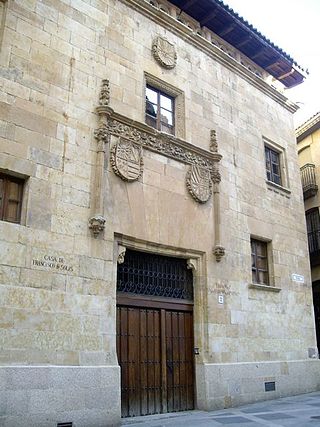
The Casa de Francisco de Solís is a fifteenth-century house-palace in the city of Salamanca.
Sight 13: Casa de Don Diego Maldonado
The house of Don Diego Maldonado is a manor house that is located in Salamanca in front of the apse of the Church of San Benito. It is the work of Juan de Álava for Diego Maldonado Rivas, waiter of Alonso de Fonseca y Ulloa, in 1531.
Sight 14: Convento de la Madre de Dios
The Convent of the Mother of God is a Franciscan convent of the Third Order in Salamanca.
Sight 15: Palacio de Monterrey
Get Ticket*The Palace of Monterrey is a building in the Spanish city of Salamanca, one of the greatest exponents of the Plateresque artistic style. Built by the III Count of Monterrey, it is currently owned by the House of Alba, which is the owner of that county. It was a building much admired and imitated in the nineteenth century, giving rise to the so-called Monterrey or neo-plateresque style, a historicism that took up the aesthetics of the plateresque.
Sight 16: Iglesia de La Purísima
The convent of the Augustinian Sisters and the church of the Immaculate Conception form a cloistered convent complex located in the historic center of the city of Salamanca. It was declared a National Monument by Decree of April 15, 1935.
Wikipedia: Convento de las Agustinas e Iglesia de la Purísima (Salamanca) (ES)
Sight 17: Capilla de la Vera Cruz
The Church of the Vera Cruz, located in the city of Salamanca, is a Baroque temple that is the seat of the Illustrious Brotherhood of the Holy Cross of the Redeemer and the Immaculate Conception, its Mother. the oldest of the penitential brotherhoods in the city. It is referred to indistinctly as Church, Hermitage and more commonly, Chapel.
Sight 18: Casa del Regidor Ovalle Prieto
The Ovalle house is a Baroque style house in the historic center of the city of Salamanca (Spain). The house has three floors and a central coat of arms by Juan Antonio Ovalle Prieto. Miguel de Unamuno lived there and died. It should not be confused with the Unamuno House-Museum that is on Calle Libreros.
Sight 19: Casa de las Muertes
Get Ticket*The House of Deaths is a house designed by the architect Juan de Álava in the historic center of the city of Salamanca (Spain). The popular name of the house responds to a mixture of popular legend and history. The house has four skulls carved in stone that, like a corbel, seem to hang from the jambs of the two upper windows of the façade. This ornamental feature, together with a murder of four inhabitants at the beginning of the nineteenth century, gave it as a popular name: "House of Deaths".
Sight 20: Casa de Doña María La Brava
The house of Doña María la Brava is a private house built around 1485, a great representative example of the houses of the Spanish nobility of the second half of the fifteenth century. It is located in the Plaza de los Bandos, in the city of Salamanca (Spain).
Sight 21: Iglesia de San Juan Bautista de Barbalos
The Church of San Juan Bautista de Barbalos in Salamanca, Spain, is a Romanesque church founded in 1150 by the Knights of the Order of the Hospital of San Juan de Jerusalem. It owes its name to the invocation of Saint John the Baptist and to the town of Barbalos, where the order had extensive possessions.
Sight 22: Casa de Santa Teresa
The house-convent of Santa Teresa is a house where Santa Teresa de Jesús lived in Salamanca. The house was owned by Commander Juan Antonio Ovalle Prieto and is close to the Church of San Juan de Barbalos. Its construction dates back to the end of the fifteenth century. Santa Teresa will live in the city, right in this house, for a period of almost four years.
Sight 23: Convento de Santa Isabel
The convent of Santa Isabel, also known as "las Isabeles", is a female convent in Salamanca.
Sight 24: Parroquia de San Boal
The church of San Boal is a baroque temple located in Salamanca.
Sight 25: Iglesia de San Juan de Sahagún
The church of San Juan de Sahagún in Salamanca, in neo-Romanesque style, is dedicated to San Juan de Sahagún, patron saint of the city. Its main façade is located on Calle Toro. The church of San Juan de Sahagún, by the architect Joaquín de Vargas, was built in 1896, in a style reminiscent of the Romanesque of the old cathedral inside, and, more specifically, the Torre del Gallo, on its exterior façade. Bishop Cámara ordered it to be built.
Sight 26: Parque de la Alamedilla
Sight 27: Iglesia de San Marcos
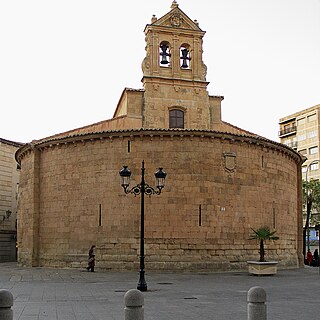
Founded at the beginning of the twelfth century, this Church of San Marcos is located on the outskirts of the historic center of Salamanca (Spain), located in "Puerta Zamora". It stands out for its circular floor plan and architectural characteristics, in Romanesque style. The Church has witnessed the history of Salamanca from its repopulation to the present day, with great importance of the Royal Clergy. Currently it continues to have its parish function and is a place of interest in the city of Salamanca.
Sight 28: Iglesia de Santa María del Monte Carmelo
The church of Santa María del Monte Carmelo is a small Baroque church in Salamanca, a remnant of the disappeared convent of Discalced Carmelites of San José, founded by Santa Teresa de Jesús in 1570.
Wikipedia: Iglesia de Santa María del Monte Carmelo (Salamanca) (ES)
Sight 29: Casa-Museo de Zacarías González
The Zacarías González House Museum is a museum in Salamanca located in the house where the Spanish painter Zacarías González lived and painted.
Share
How likely are you to recommend us?
Disclaimer Please be aware of your surroundings and do not enter private property. We are not liable for any damages that occur during the tours.
GPX-Download For navigation apps and GPS devices you can download the tour as a GPX file.
